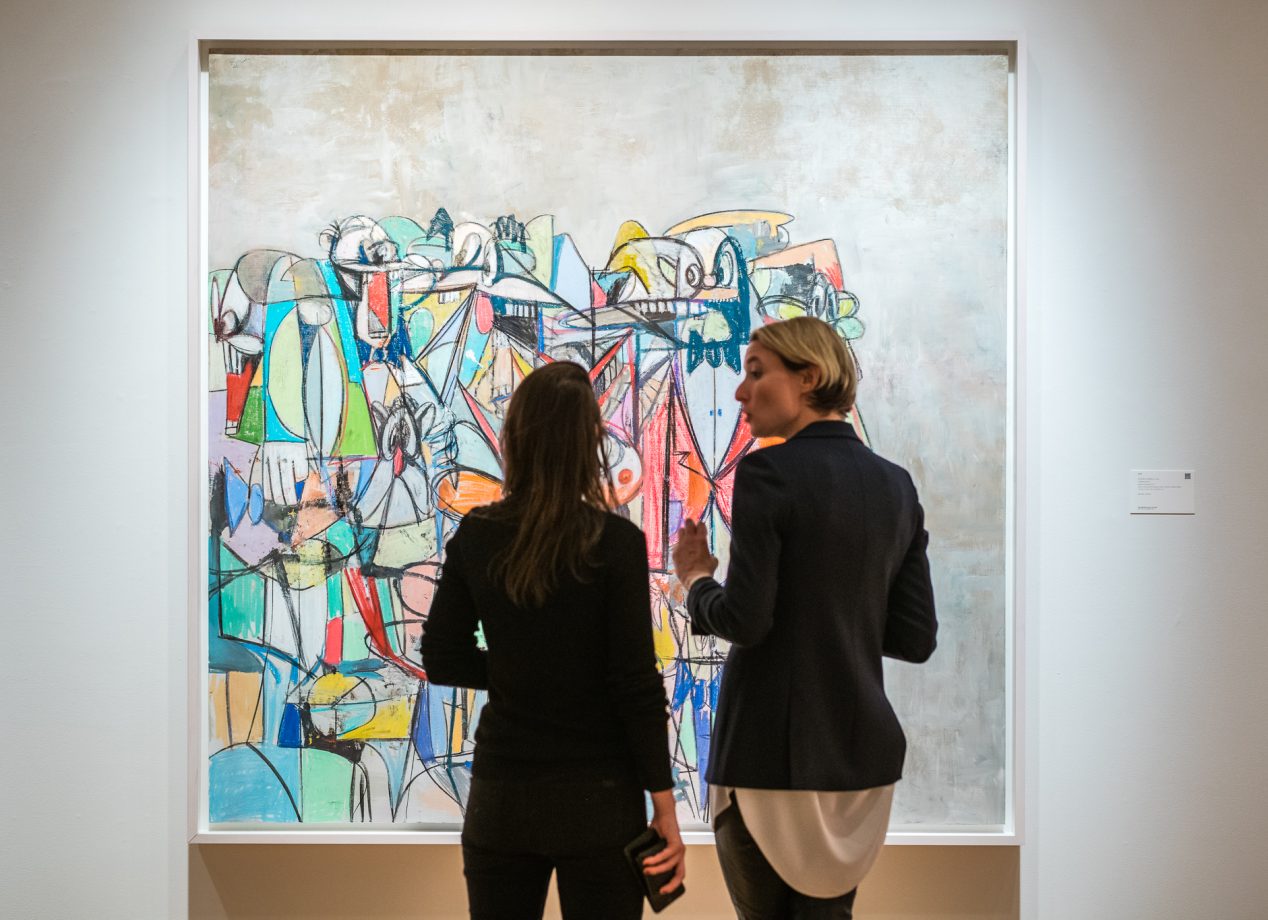Many of those who are new to art might feel a little intimidated about walking into a gallery to look at what's on display. Thankfully, most galleries are very welcoming, and assistants are happy to discuss the art featured at the gallery. This guide answers some common questions people have about galleries, such as:
What is an art gallery?
At its core, an art gallery is a dedicated space for the exhibition and sale of art. Contemporary art galleries, in particular, focus on the most current art forms, showcasing innovative works from current and rising artists that are reflective of today's issues. These spaces serve as critical platforms for emerging and established artists to gain visibility and for art enthusiasts to encounter new artistic expressions.
What are the different types of art galleries?
Galleries can be broadly categorized into several types, each serving distinct roles within the art world.
Commercial Galleries
These galleries operate primarily as businesses, selling artworks to collectors and the public. They represent artists, fostering their careers by exhibiting their artworks and promoting them to potential buyers. This is the most common type of art gallery.
Non-Profit Galleries and Artist-Run Initiatives
Focused more on the promotion of art rather than sales, these galleries often showcase experimental artworks or artworks by local artists. These galleries provide a platform for artists to exhibit their artworks, and often host events and artist meetups for its local community of artists.
Vanity Galleries
These galleries charge artists fees in exchange for a space to exhibit and promote their artworks. While they offer exposure, the artist bears the cost of the exhibition space and associated expenses.
Unlike commercial galleries, vanity galleries make most of their profits directly from the artists rather than through the artworks they sell.
Online Galleries
Many galleries now operate online, offering a virtual space for artists to showcase their artworks to a global audience. An online gallery can be run in tandem with a physical commercial gallery or as its own business model with the aim of selling their artworks to a larger audience.
Each type of gallery plays a unique role in the ecosystem of the art world, providing varied opportunities and challenges for artists and collectors alike.
How do art galleries operate?
In today’s competitive art landscape, art galleries must be committed to their unique mission and execute innovative and engaging exhibitions. Each gallery is led by a team of art business experts and presents an individual collection of art that speaks to a specific style, interest, or specialty.
Gallery owners and directors curate exhibitions with a keen eye for aesthetic value and market trends. A typical art gallery operates by selecting and exhibiting artworks for a selected period of time. During this time, the gallery promotes the exhibition through various channels, aiming to attract visitors and potential buyers.
How do art galleries make money?
Sales generated from the gallery go towards supporting the artists and the gallery's operational costs. According to Artfundi, galleries will typically receive a commission of 40-50% of the price of the artwork once sold. Many galleries today also charge an exhibition fee to display artists’ work, ensuring they receive income regardless of whether artworks are sold.
Contemporary galleries also often engage in art fairs, online sales, and promotional collaborations to expand their reach and influence beyond the gallery.
What are the main functions of an art gallery?
An art gallery fulfills several key functions, both within their local community and the broader art world. The most obvious function of an art gallery is to provide a physical or virtual platform for artists to exhibit their work. This exposure is crucial for artists to build their reputation and connect with audiences who are interested in learning about or purchasing their artworks.
Galleries also play a significant role in the larger art market, facilitating the sale of artworks and contributing to the valuing of art.
“The galleries most actively engaged in identifying and nurturing emerging talent are often themselves emerging or have an institutional mission that prioritizes more than just commercial success. This is a rarity in the current art market ecosystem,” says Hongzheng Han, Faculty at Sotheby’s Institute of Art.
Through exhibitions, talks, and workshops, galleries are also responsible for educating the public about the most important artistic voices that exist today, fostering conversation and education around art and the contemporary issues that artists are exploring.
“Regardless of size or stature, a gallery that truly upholds its cultural stewardship should make efforts toward public education and engagement. Fortunately, we are seeing many galleries building collaborative partnerships with educational institutions, universities, and non-profit organizations to promote art literacy and foster more inclusive accessibility.
"Sotheby's Institute of Art has consistently been pioneering such efforts, actively collaborating with galleries across the spectrum to assist in developing robust educational programming. By engaging with these dynamic spaces, Sotheby's Institute provides its students with invaluable insights from art world professionals while also nurturing a generation of young cultural leaders committed to restructuring the art world as a more open and equal sphere,” says Han.
 Advance your career with a certificate or degree in Contemporary Art. Learn more about our online courses and our Master’s Programs.
Advance your career with a certificate or degree in Contemporary Art. Learn more about our online courses and our Master’s Programs.
What is the difference between an art gallery and an art museum?
While art galleries and museums both play critical roles in the cultural landscape, their functions and objectives differ significantly.
Art galleries are primarily commercial entities focused on the sale of art, representing artists and fostering their careers. They are more dynamic, with frequently changing exhibitions that reflect current trends and market demands.
Museums, on the other hand, serve as custodians of historical, cultural, and educational artworks. Their collections are often vast, encompassing a wide range of periods and styles, and they are typically not for sale.
Museums focus on preservation, research, and education, providing in-depth insights into the context and significance of the artworks they display. Their exhibitions tend to be long-term or feature permanent collections, compared to the transient nature of gallery shows.
What are the roles within the gallery?
The swift operation of an art gallery relies on the dedication and expertise of various professionals:
Gallery owners/directors make critical decisions about the gallery's vision, the artists it represents, and the exhibitions it presents. They also oversee the business aspects of the gallery, including sales and marketing strategies.
Curators are responsible for selecting the artworks to be displayed, organizing exhibitions, and ensuring the gallery's offerings are engaging and relevant. They often work closely with artists to gain a deeper understanding of their work and vision.
"Curators and gallerists must evaluate whether an artist's style aligns with current market trends and whether their artistic approach shows potential for sustained relevance. Long-term sustainability is a crucial consideration alongside present-day metrics of success,” says Han.
Art handlers and installers are skilled in the proper handling, installation, and lighting of artworks, and work on installing art with the curator to ensure that each artwork is displayed in alignment with their vision for the exhibition.
Sales staff and art advisors assist collectors and buyers in selecting artworks, providing expertise on the artwork's value and its potential as an investment.
Lastly, marketing and public relations specialists promote the gallery’s exhibitions and events, aiming to attract visitors to the gallery and generate media coverage to enhance the gallery's profile.
Advance your career with a certificate or degree in Contemporary Art. Learn more about our online courses and our Master’s Programs.
